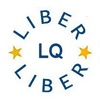How to Mobilize your Library at Low Cost
DOI:
https://doi.org/10.18352/lq.8054Keywords:
mobile web, QR codes, mOPAC, augmented realityAbstract
The W3C defines the mobile web as a web in which users are able to access information from any location, regardless of the type of device used. In recent years, Internet access from mobile devices has grown considerably. This is due to many factors such as technological improvements of these devices, faster data transmission and lower connection costs.
This new context has led to the creation of various mobile web tools which offer a variety of features, such as adaptability of web websites, use of QR codes (Quick Response), geolocation tools, augmented reality and RFID technology just to name a few.
Technological advances give rise to new challenges. We should face this situation not as a threat or added workload, but as an opportunity to adapt the library to the new demands or needs of our users. This means that some of the services currently offered by the library will have to evolve, for example, with the creation of a mobile website or a mOPAC (mobile OPAC). New services could be offered, such as QR codes embedded in the catalog with bibliographical information, virtual reference through the mobile or geolocation of libraries.
This paper will first provide some basic and introductory information on the mobile web. It will then go on to describe some tools used in this area. In some cases, different options will be shown taking into account factors such as cost, for example. The aim here will be provide an overview that will allow a given library to select the best tool according to their functions and their budgets. Finally, a list of library applications will be given, as well as their associated implementation processes in the Universitat Politècnica de València (UPV) library.
The ultimate goal of this paper is to encourage the creation and adaptation of services offered in libraries, placing special emphasis on the idea that a variety of services can be offered with just basic computer skills and a small staff, since in many cases these tools are available free of charge. In other words, these are low-cost tools that offer high returns to the user.
Downloads

Downloads
Published
Issue
Section
License
Copyright (c) 2012 Marta Abarca Villoldo, Andrés Lloret Salom, David M. Pons Chaigneau, Francisco José Rubio Montero, Raquel Vallés Navarro

This work is licensed under a Creative Commons Attribution 4.0 International License.





